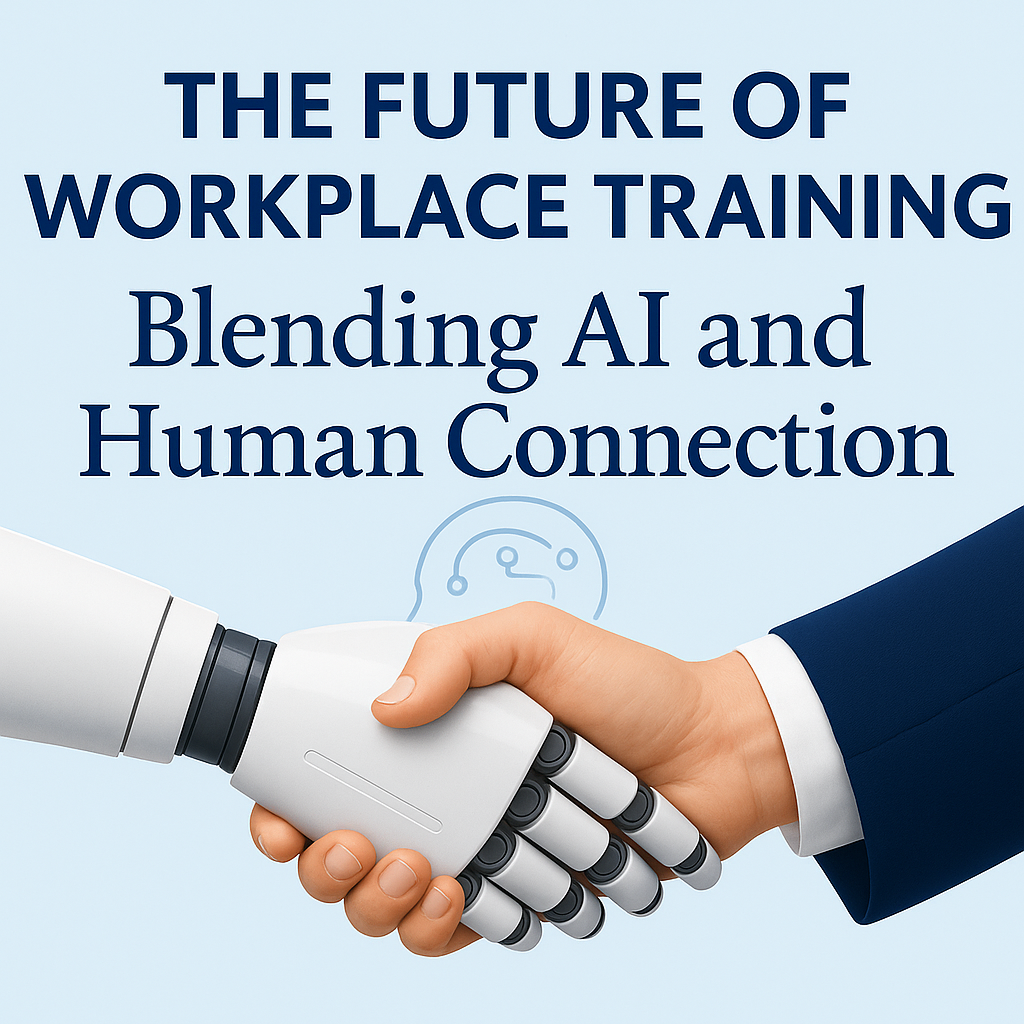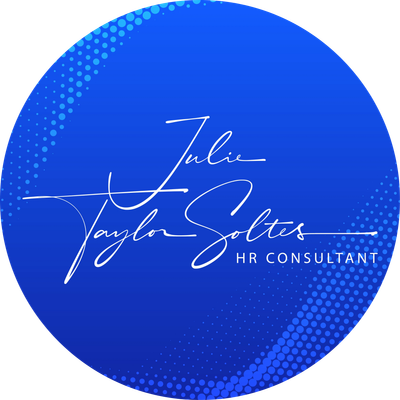The Future of Workplace Training: Blending AI and Human Connection

Introduction
The world of workplace training is changing at lightning speed. Artificial Intelligence (AI) has opened the door to exciting possibilities: personalized learning, instant feedback, and efficient onboarding. But amid all the tech-driven innovation, one truth remains clear: employees don’t just need information — they need connection. The future of workplace training will not be defined by AI or people, but by AI with people. Organizations that strike this balance will see stronger engagement, better retention, and healthier workplace cultures.
The Power of AI in Training
AI has quickly become a game-changer in Learning & Development. With the right systems in place, companies can:
- Personalize Learning Journeys: AI tailors modules to each employee’s skill set and pace.
- Automate Compliance & Onboarding: Employees can complete standardized training faster and more consistently.
- Deliver Real-Time Feedback: AI chatbots and simulations allow learners to practice scenarios and instantly correct mistakes.
- Leverage Data Analytics: Leaders can see who’s excelling, who’s struggling, and which programs are most effective.
Example: A hospitality group using AI-driven training modules for ADA compliance ensures every employee gets consistent, interactive practice handling guest needs — something that’s difficult to scale with traditional training.
Why Human Connection Still Matters
While AI makes training more efficient, it cannot replace what makes learning stick: human connection. Employees want to feel seen, supported, and part of something bigger than themselves. Human-led training brings:
- Empathy & Emotional Intelligence: Trainers model how to navigate sensitive interactions.
- Mentorship & Coaching: Managers and peers provide context, encouragement, and accountability.
- Culture Building: Shared experiences reinforce organizational values and belonging.
- Inspiration & Motivation: Technology informs, but people inspire.
Without this, training risks becoming another “checkbox” activity that employees complete but quickly forget.
The Blended Approach: Best Practices
So how do you blend the best of both worlds? Here are five practical strategies:
- Automate the Basics, Humanize the Complex
Let AI handle compliance and foundational knowledge, freeing up human trainers to focus on higher-level skills, leadership, and culture. - Combine Self-Paced with Live Interaction
Pair digital modules with manager-led discussions, role-playing, or team workshops. - Use Data to Drive Coaching
Provide managers with AI insights so they can target one-on-one coaching where it’s most needed. - Embed Storytelling
Real stories from leaders and peers make digital content relatable and memorable. - Check the Human Pulse
Regularly survey employees to ensure training feels personal, not mechanical.
Case Example: A Balanced Solution
One mid-size resort chain adopted AI onboarding to train seasonal staff — reducing training time by 30%. But they didn’t stop there. Each new hire was paired with a mentor for weekly Q&A and culture-building conversations. The combination of fast, efficient AI modules and meaningful human support created better retention, higher guest satisfaction, and stronger employee morale.
Conclusion
The future of workplace training isn’t about choosing between AI and people. It’s about designing learning experiences where each strengthens the other. AI delivers personalization and scale; humans provide trust, empathy, and connection. Organizations that embrace this blended approach will create not only skilled employees but also loyal, engaged teams ready to thrive in a rapidly changing world.
